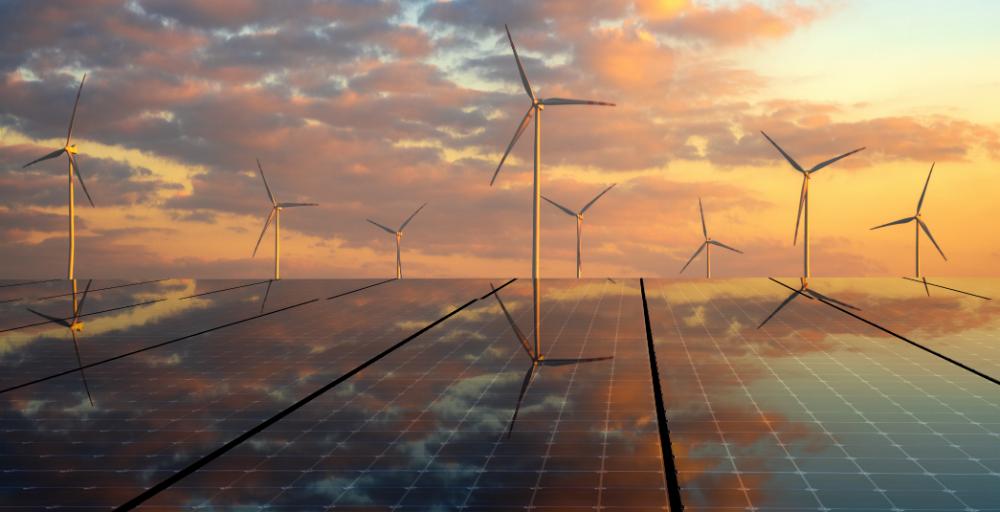As the world transitions towards cleaner power sources like solar, wind and tidal energy, a humble yet revolutionary class of materials is playing a pivotal role – advanced composite materials. Extremely strong yet lightweight, composites allow renewable energy structures and components to be designed smaller, more portable, and resilient.
What are Composite Materials?
At their core, composites combine two or more materials to create an optimized new material with enhanced properties. Classic examples include concrete (a composite of rock and cement) and fiberglass (plastic resin reinforced by glass fibers).
In the renewable energy field, advanced composites pair ultra strong synthetic fibers like carbon or aramid with extremely tough polymer resins. The result is materials that boast incredible strength-to-weight ratios perfect for massive energy-harvesting structures.

Applications Across Renewables
Wind Turbine Blades
With lengths up to a hundred meters, modern wind turbine blades are true composite marvels – featuring hollow interiors reinforced by a sandwich construction of composite face sheets bonded to lightweight honeycomb cores. The experts over at Axiom Materials explain that using composites keeps blade weight down while providing exceptional stiffness to withstand intense centrifugal forces and wind buffeting.
Solar Panel Frames
Rather than heavy aluminum framing, many solar panels now use pultruded fiberglass composites that are extremely weather/UV resistant yet are a fraction of the weight. Whole renewable energy farms can be constructed using these lightweight modular composite frames.
Tidal Power Systems
Massive underwater tidal energy turbines must withstand relentless pounding from ocean currents and saltwater corrosion. Enter durable composites like carbon fiber reinforced polymer (CFRP) that provide the necessary ruggedness while allowing buoyant, easily deployable designs.
Benefits of Composites
Beyond their strength and light weight, advanced composites offer other compelling advantages for renewable energy infrastructures:
Corrosion Resistance
Unlike metals, composites do not rust, corrode, or weaken from exposure to harsh maritime environments. This quality slashes long-term maintenance needs.
Design Flexibility
Composites can be molded into incredibly complex curved shapes, allowing for aerodynamic, structurally optimized component designs. Their tailored properties also enable innovative solutions like modular construction methods.
Sustainability
Many newer composite formulas tap bio-based resins and natural reinforcing fibers like hemp or basalt, creating “greener” materials well-suited for earth-friendly energy systems. High strength also means less material is required.
Continuous Improvements
Of course, advanced composites are not a rigid, solved technology; they continue rapidly evolving as material scientists unlock new polymer matrices, nano-reinforcements, stronger core materials like thermoplastic honeycombs, and more intelligent manufacturing processes.
Each innovation boosts the performance capabilities while driving down costs; a virtuous cycle accelerating the adoption of composites across wind, solar, tidal, and other renewable sectors.
Embedding Intelligence
Looking ahead, composite developers foresee enormous opportunities for embedding multi-functional characteristics right into renewable energy structures:
Self-Healing Polymers
Micro-encapsulated agents could allow small cracks and delamination in composites to automatically repair themselves, dramatically extending service lifetimes.
Integrated Sensor Networks
Conductive nanomaterials could enable self-monitoring composites able to report on structural stresses, damage, or electrical performance, which is key for optimizing safety and output.
Energy Generation/Storage
Some cutting-edge composites may one day generate their own power from embedded photovoltaics, wind micro-turbines or Energy Harvesting sources, perhaps even storing power in structural battery/supercapacitor composites.
Conclusion
While composites have revolutionized the strength and weight possibilities for large-scale renewable installations, the next frontier is harnessing these space-age materials as multi-functional, intelligent systems and structures.
Merging common manufacturing materials with nano-science breakthroughs means energy-generating smart composites could become the norm rather than the exception, ushering in self-sustaining, self-monitoring and practically self-repairing energy platforms. An exciting new era of advanced materials enabling endless green energy.





